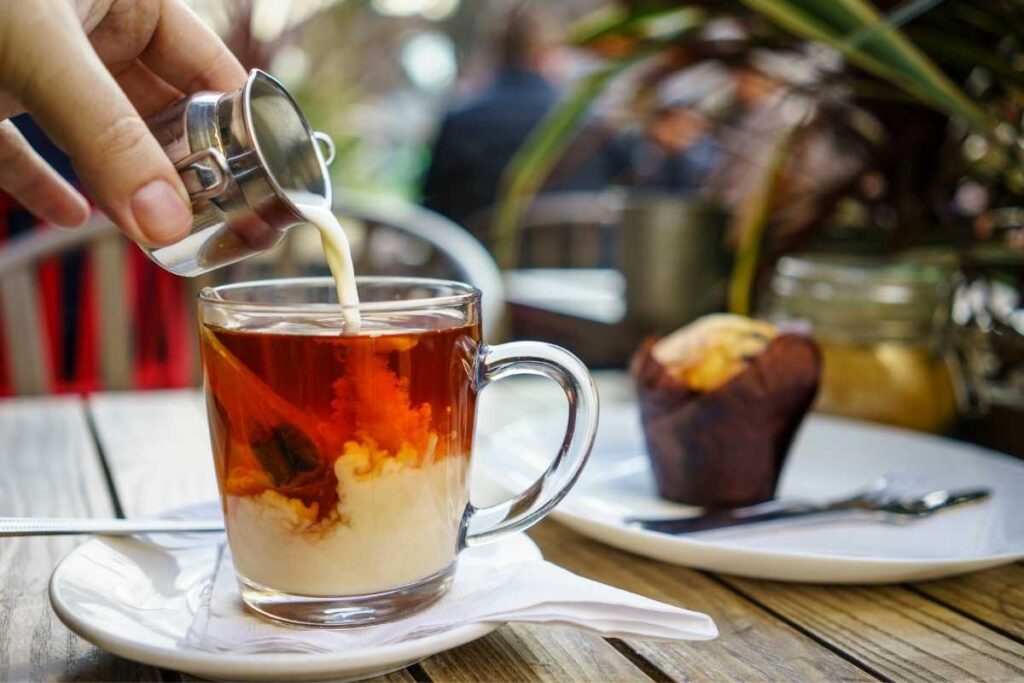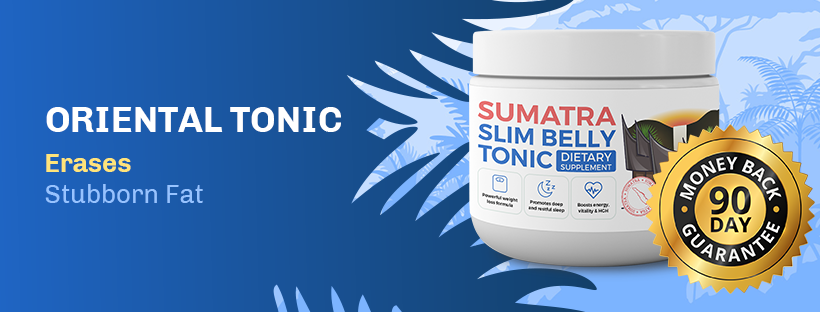Caffeine in Tea vs Coffee: Your Guide

Caffeine is a naturally occurring stimulant that can be found in various plants, including coffee beans and tea leaves. It is widely consumed by people all over the world to help stay alert and focused. Caffeinated teas are among the favorite teas of many people, as they provide a natural energy boost without the jitters that come with espresso. In addition to traditional tea leaves, caffeine can also be found in herbs used to make tea. In this article, we will explore caffeine in tea and its effects on the body.
Caffeine, found in coffee beans and espresso, is a psychoactive substance that stimulates the central nervous system. Caffeinated teas are also popular for their energy-boosting effects. Tea consumption can provide similar benefits as coffee, as both contain caffeine which blocks adenosine receptors in the brain, promoting alertness and improving cognitive function.
Tea contains varying amounts of caffeine depending on the type of tea and how it is prepared. For example, black tea typically contains more caffeine than green or white tea due to its longer oxidation process. Herbal teas such as chamomile are naturally caffeine-free since they do not contain any actual tea leaves. Similarly, the amount of caffeine in coffee beans varies depending on the brewing method used to make espresso, with an average of 63 milligrams per fluid ounce.
The amount of caffeine in a cup of tea can range from 15-70 milligrams per cup depending on factors such as brewing time and water temperature. This makes caffeinated teas an ideal alternative for espresso drinkers who want to reduce their coffee consumption but still need a little pick-me-up throughout the day. Try experimenting with different brewing times and water temperatures to find your favorite teas that provide the perfect amount of caffeine.
While some people may experience negative side effects from consuming too much caffeine, such as jitters or difficulty sleeping, moderate consumption of favorite teas has been shown to have numerous health benefits. Tea polyphenols found in green tea, black tea, and other antioxidant-rich varieties have been linked to reduced risk of chronic diseases such as cancer and heart disease. Theanine found in tea leaves has been shown to promote relaxation without causing drowsiness, making it a great mood enhancer. However, it’s important to note that the caffeine content in tea is lower than in espresso.
Comparing caffeine content in tea and coffee
Tea and coffee are two of the most popular beverages worldwide. While both contain caffeine, there is a significant difference in their caffeine content. Espresso, which is a type of coffee, contains a higher amount of caffeine per ml than regular coffee. In this section, we will compare the amount of caffeine found in tea and coffee, as well as discuss articles that highlight the health benefits of caffeine and antioxidants.
On average, an 8-ounce cup of tea contains around 20-60 mg of caffeine, while an 8-ounce cup of coffee contains around 95 mg of caffeine. This means that coffee has almost twice as much caffeine as tea. However, the amount of caffeine in tea can vary depending on various factors such as the type of tea, brewing time, and serving size. Espresso, a concentrated form of coffee, typically contains around 63 mg of caffeine per 30 ml shot. If you’re interested in learning more about the differences between tea and coffee, there are plenty of informative articles available online.
For instance, black teas have higher levels of caffeine compared to green or white teas. According to articles published by the Food Research International, a typical 177 ml cup of black tea contains between 25-48 mg of caffeine while green tea has between 11-20 mg per cup of the same volume. Brewing time can also affect the amount of caffeine in your cuppa. The longer you steep your tea leaves or teabag in hot water, the more caffeine will be extracted.
It’s also worth noting that different types and sizes of cups or articles can impact how much caffeine you consume from your drink. For example, if you drink a larger-sized cup or mug than usual or opt for a double shot espresso instead of a single shot coffee, you’ll be consuming more caffeine than you would typically do. Additionally, paying attention to the ml measurement of your cup can also help you keep track of your caffeine intake.
So why does this matter for tea drinkers? Well, the amount of caffeine in tea varies depending on the type of tea blends you choose. For instance, chamomile tea is naturally caffeine-free while black tea contains the most caffeine. Too much consumption of caffeinated beverages can lead to adverse health effects such as anxiety, insomnia, and high blood pressure among others. Therefore, understanding how much caffeine is present in your tea is essential when making choices about what to drink throughout your day.
Understanding the effects of caffeine on the body
Caffeine, a naturally occurring stimulant found in various foods and beverages, including tea, is consumed by millions of people worldwide, especially tea drinkers. While caffeine consumption can result in both positive and negative effects on the body, chamomile tea and iced tea containing tea polyphenols remain popular choices for many individuals due to their ability to provide a quick energy boost. In this section, we will explore the effects of caffeine on the body.
One of the most common myths surrounding caffeine is that it acts as a mood enhancer, especially for tea drinkers. While it can provide an initial burst of energy and alertness, excessive consumption of iced tea or oolong tea can cause anxiety and restlessness. Withdrawal symptoms such as headaches and fatigue may occur when regular caffeine consumption is abruptly stopped.
Despite concerns regarding its use, there are also several health benefits associated with moderate caffeine consumption. Studies have shown that caffeine can improve cognitive function by enhancing memory and increasing attention span. Furthermore, regular coffee drinkers have been found to have a reduced risk of developing conditions such as Alzheimer’s disease. In addition, iced tea and oolong tea, which also contain caffeine, may provide similar benefits.
In recent years, concerns regarding caffeine use in the United States have led to regulations on its consumption. The Food and Drug Administration has advised against excessive caffeine intake among children and pregnant women due to potential adverse effects on their developing systems. However, iced tea, a popular beverage that often contains caffeine, may still be consumed in moderation.
Variations in sensitivity to caffeine
Caffeine is a natural stimulant found in many beverages, including tea. However, not all teas contain the same amount of caffeine, and different people can have varying levels of sensitivity to it. Here are some factors that affect the caffeine content in tea and how it affects individuals differently.
Varieties and types
Tea comes in different varieties and types, each with its own unique flavor profile and caffeine content. Black tea generally has the highest amount of caffeine compared to other types such as green or white tea. For instance, a cup of black tea contains around 47 milligrams of caffeine per eight-ounce serving while green tea contains around 28 milligrams per eight-ounce serving.
Tolerance levels
Studies show that some drinkers have a higher tolerance for caffeine than others. Factors such as genetics, age, weight, gender, and overall health can influence an individual’s tolerance level for caffeine. Some people may experience jitters or anxiety after consuming even small amounts of caffeine while others may require several cups before experiencing any effects. When it comes to tea consumption, these same factors can also play a role in an individual’s tolerance for caffeine.
Temperature and steep time
The temperature at which you brew your tea can also affect the amount of caffeine extracted from the leaves. Steeping your tea leaves at higher temperatures will result in more caffeine being released into the water compared to lower temperatures. Similarly, longer steep times will also increase the amount of caffeine extracted per ounce.
Amino acid content
Some varieties of tea contain an amino acid called L-Theanine that can help increase alertness without causing jitters or anxiety commonly associated with high doses of caffeine. This amino acid promotes relaxation by increasing alpha waves in the brain while reducing beta waves associated with stress.
Flavored teas
Flavored teas may have lower levels of caffeine due to added ingredients like fruits or flowers that dilute the concentration of the active compounds in the brew (et al).
Types of tea with lowest caffeine percentage
White tea is considered to be the type of tea with the lowest caffeine content among all types of tea. This is because white tea leaves are harvested at a young age and undergo minimal processing, resulting in a milder flavor profile and lower caffeine levels. It is also believed that white tea contains higher levels of antioxidants compared to other types of tea due to its minimal processing.
Green tea, on the other hand, has low caffeine content but it varies depending on the processing method. For instance, Japanese green teas tend to have higher caffeine content than Chinese green teas due to differences in growing conditions and harvesting methods. However, overall, green teas contain less caffeine than black teas since they are less oxidized.
Oolong tea falls in between green and black tea in terms of caffeine content. The amount of caffeine in oolong tea can vary depending on factors such as oxidation level and brewing time. Generally speaking, oolong teas that are more heavily oxidized tend to have higher levels of caffeine.
Herbal teas are naturally caffeine-free, making them a good alternative for those who want to avoid caffeine altogether. Examples of herbal teas include chamomile, peppermint, rooibos, and hibiscus teas. These types of teas offer various health benefits such as aiding digestion or promoting relaxation without the stimulating effects associated with caffeinated beverages.
Teas with most and least caffeine content
Tea is a popular beverage enjoyed by many et al around the world. While some people prefer their tea strong and caffeinated, others may opt for a milder option. If you’re wondering which teas have the most and least caffeine content, keep reading!
Teas with the most caffeine content include black tea, yerba mate, and matcha. Black tea is made from the leaves of the Camellia sinensis plant and has an average of 47 mg of caffeine per 8 fl oz serving. Yerba mate, a traditional South American drink, has an average of 85 mg of caffeine per 8 fl oz serving. Matcha, a type of green tea that is finely ground into a powder, contains about 70 mg of caffeine in one teaspoon.
If you’re looking for a low-caffeine option, white tea is a great choice with an average of only 28 mg per 8 fl oz serving. White tea is made from young leaves and buds of the Camellia sinensis plant and undergoes minimal processing compared to other types of teas.
In addition to these teas, there are also herbal teas that are naturally caffeine-free such as chamomile and peppermint.
It’s important to note that while these are averages for each type of tea, the actual amount can vary depending on factors such as brewing time and temperature. For example, steeping black tea for longer periods can result in higher levels of caffeine compared to steeping it for shorter periods.
Ultimately, it’s all about personal preference when it comes to tea caffeine levels. Whether you prefer a strong cup with high caffeine contents or something more mild and soothing with lower caffeine amount, there’s always a type of tea out there for everyone!
Tips for managing caffeine intake from tea at home
To manage caffeine intake from tea, there are a few tips that you can follow to still enjoy your favorite beverage without experiencing unwanted side effects. Here are some of the best ways to manage caffeine intake from tea:
- Use fewer tea bags: The amount of caffeine in your cup of tea is directly related to the number of tea bags used. To reduce caffeine intake, use fewer tea bags when brewing your cuppa. This will result in a lighter and less caffeinated brew.
- Opt for a shorter brewing method: The longer you steep your tea, the more caffeine it will contain. To limit caffeine extraction, opt for a shorter brewing method. For example, instead of letting your tea steep for five minutes, try three minutes instead.
- Avoid using hotter water: The temperature of the water used to brew your tea can also affect how much caffeine is extracted from the leaves. Hotter water extracts more caffeine than cooler water, so try to avoid using boiling water and instead opt for slightly cooler temperatures.
By following these tips, you can still enjoy your daily cup of tea while managing your caffeine intake. However, if you are particularly sensitive to the effects of caffeine or trying to cut back on overall consumption, it may be worth considering other options such as herbal teas which do not contain any caffeine at all.
It’s important to note that different types of teas have varying levels of naturally occurring caffeine. For example, black teas typically contain higher amounts than green or white teas. If you’re looking for a lower-caffeine option but don’t want to give up traditional teas altogether, consider exploring different varieties and blends that may have lower levels.
understanding and managing your caffeine intake from tea
Understanding and managing your caffeine intake from tea is crucial for maintaining a healthy lifestyle. While tea has numerous health benefits, it is important to be aware of the caffeine content in different types of tea and how it affects your body. By comparing caffeine content in tea and coffee, understanding the effects of caffeine on the body, and recognizing variations in sensitivity to caffeine, you can make informed decisions about your daily caffeine intake.
If you are looking for teas with low caffeine percentages, consider herbal teas such as chamomile or mint. On the other hand, black teas like English Breakfast or Earl Grey have higher levels of caffeine. Green tea falls somewhere in between with moderate levels of caffeine. It is also important to note that brewing time and water temperature can affect the amount of caffeine released from the tea leaves.
To manage your caffeine intake from tea at home, try switching to decaf versions or limiting your consumption to certain times of day. You could also experiment with different types of teas that have lower levels of caffeine or try adding non-caffeinated herbs like lavender or lemon balm for flavor.




